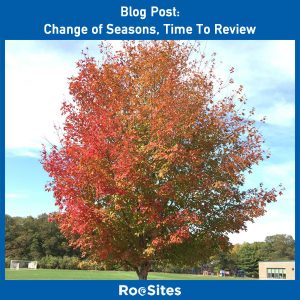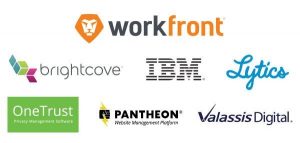
The modern sales world is changing more rapidly than ever before, especially thanks to the rise of Software as a Service (SaaS). Most SaaS platforms use a subscription-based model, which means the company subscribing to the service usually pays a yearly, quarterly, or monthly fee for the product and/or service.
Success is the New Sales™
And for SaaS companies, this new subscription-based model has changed the way business is done across the entire company. No longer is a sale “won and done”. In today’s SaaS businesses, the sale has to be won many times over in the form of renewals. Customer success is becoming the engine to full rapid growth and profitability. We say, “Success is the new sales.”
Metrics, Metrics, Metrics
For executives, this means that they no longer can measure just 2 or 3 top line metrics to understand the health of the business, or to predict what the business will look like in a year or more. In today’s sales world, there are hundreds of metrics and tools for measurement across new business and existing business alike. With the technology available, there is no shortage of data or metrics, but the amount of information can simply be overwhelming.
Focus on the Right Customer Metrics
In order to understand the future of the business, executives can learn a tremendous amount about the business as a whole from current customers. They can learn how satisfied customers are, the reasons they bought the product or service in the first place, what they would change about the process, and so on. Learning from current customers – old and new, big and small, and across all industries – and applying the findings back into the sales process is one of the most important things an executive can do to benefit the overall health of the business. But what are the core areas that you as a customer success executive should monitor?
3 Core Areas a Customer Success Executive Should Monitor

Below, we’ll provide you 3 core areas to watch, along with guiding metrics or tactics that can help you ensure your attention is focused on the right areas:
1. Maintain Current Customers
The most important focus area of customer success is whether or not your company is maintaining current customers. Do you have customers leaving for a competitor or not renewing for another reason after just a few quarters or even after several years? If so, then there are several metrics that can be monitored to help you discover where the problem(s) may be across your processes, product, or people:
- Logo Churn Rate: The logo churn rate is the number of customers or logos who have stopped doing business with your company during a given time period. In short, these customers have “churned.”
- Dollar Churn Rate: Similar to the logo churn rate, the dollar churn rate is the amount of dollars lost when customers have stopped doing business with your company during a given time period.
- Downsell: Opposite of an upsell, a downsell occurs when a customer reduces their spend with your company by downgrading their product, features, or services.
- Recurring Book of Business (RBOB): RBOB for short, a recurring book of business is essentially the annual recurring revenue number that a SaaS business measures. This is defined as the number of predictable dollars that should be renewed each quarter or each year.
2. Increase Revenue of Current Customers
Not only is renewing your customer base important to SaaS business models, but an equally important focus area is whether your customers see enough value in the product or service you provide to grow their accounts. According to a recent Inc. Magazine article, “Acquiring new customers is expensive (five to ten times the cost of retaining an existing one), and the average spend of a repeat customer is a whopping 67 percent more than a new one.”
SaaS customer success executives understand that a massive business focus should be placed on nurturing existing customers to ensure they are seeing the full value of the product or service. But just as important is understanding the core areas that lead to growing customer accounts so they fully realize the potential your company can offer:
- Expansion Opportunities: Identifying expansion opportunities in customer accounts means finding areas where the customer could see additional benefit or value by upgrading their product or service, adding more users, adding new features or functionality, or increasing service components.
- Expansion Opportunities Created: Opportunities created refers to how many new areas of expansion have been identified across customer accounts.
- Expansion Dollars Won: Dollars won pertains to how many new dollars, whether from a renewal or expansion, originated from a customer account.
3. Predict Overall Customer Sentiment
Most customer success executives focus a significant amount of their time and attention on areas 1 and 2. While it’s important to maintain and grow customer accounts, many leave out a very important area of focus that’s more qualitative than quantitative. By focusing on the first 2 core areas, you may be able to predict with close accuracy the number of customers who will renew and how many will expand their engagement.
However, there is a 3rd area that is completely stand alone. This core focus has everything to do with how the customer feels about your product or service, and even how they work with their CSM and use your product or service. If this focus area is left out of the equation, then you may be neglecting some of the most telling customer sentiment signs available to you:
- Net Promoter Score (NPS): NPS is a measurement tool that can be used to determine the loyalty of customers to your company. The score can also serve as an alternative to research methods.
- Referrals from Current Customers: Determining if a referral came from a current customer is a great indication of whether a customer is happy and would recommend your company, product, or service.
- Product Usage: Understanding metrics around how many users at a given company use your product, what features or service they use, and how often they use the product or service can be a direct correlation to determine how much value they are receiving.
- Engagement with CSM: While difficult to measure, determining how the customer interacts and engages with their CSM is very telling to how satisfied (or not) the customer is with the relationship. Keep in mind that the sentiment around how the CSM is engaging with the customer can change quickly, so it’s important to monitor this area closely and frequently.
- Customer Surveys: Instituting surveys around key milestones, such as completion of implementation, quarterly surveys, and surveys across various roles can be a good indication of how sentiment may change based on what the company is going through at any given time, across any given role.
- Customer Pulse: Pulse helps executives answer why. With a simple, regular note from the CSM or team member, this key metric helps round out the SuccessScore™ with a personal perspective on customer health.
If you’re new to the SaaS industry or perhaps haven’t implemented a customer success strategy yet, it’s time to start thinking about your most valuable relationships: the relationships with your customers. Building customer relationships early on prevents problems in the customer lifecycle, inevitably decreasing turnover and turning your customers from businesses that use your product or service to brand advocates. When your customer succeeds, your SaaS company succeeds.
Business & Finance Articles on Business 2 Community(40)







